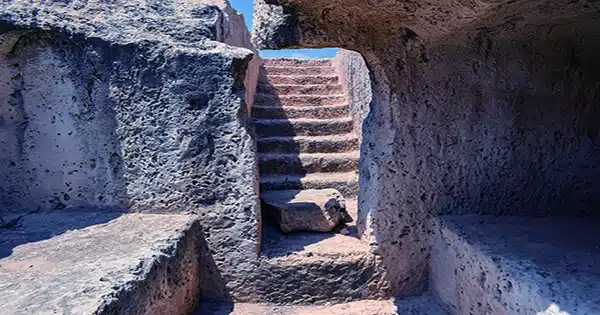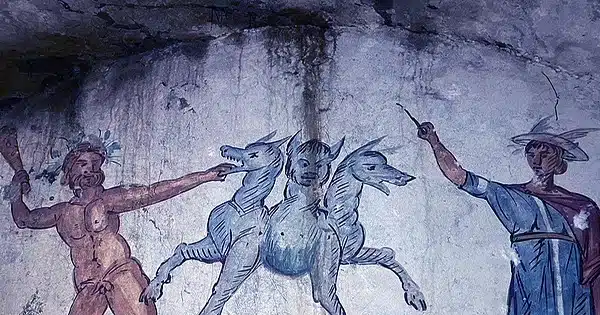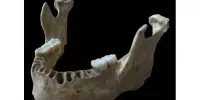Archaeologists uncovered an extraordinarily well-preserved and sealed chamber tomb in Giugliano, Campania, Italy. The tomb is decorated with numerous frescoes, the most renowned of which shows Cerberus, the three-headed protector of the Underworld, giving rise to the tomb’s name, the Tomb of Cerberus.
The tomb was uncovered during an archaeological examination in the Flegreo Domitiana area as part of a bigger program for the “Completion and adaptation of the water supply system,” according to an Italian Ministry of Culture statement.
Previous research has revealed that this site is densely packed with multiple burial sites displaying distinct burial customs (both inhumation and cremation) and dating from the Roman Republic (509 BCE to 27 BCE) and the Roman Imperial Age (31 BCE to 476 CE).

During their excavations, the archaeologists discovered an opus incertum – a form of a face that used Roman concrete or rubblework walls – that they initially thought delineated the necropolis’s limit. However, additional inspection revealed that it was the front of a “monumental” chamber tomb. The original tuff slab used to close the space remained sealed in the tomb. Behind this slab was a vast chamber with incredible frescoes on its walls and ceilings.
The Cerberus fresco depicts the iconic three-headed hound from Greek mythology standing between a naked man, most likely Heracles (Hercules to Romans and Disney), and Hermes, the messenger deity. The scenario most likely shows Heracles’ final of twelve labors, which required him to capture the chthonic doggo.
The tomb also features depictions of various mythological scenarios, such as ichthyocentaurs (fish-horsemen) wielding a clypeus, a shield carried by Greek hoplites and Romans. Two winged erotic – Roman cherub-like entities represented as newborns – are accompanying the two individuals. These minor gods were a collective group linked with love and sexual intercourse, much like Cupid.
The resident of the tomb remains on the funeral bed on which they were laid to rest, surrounded by a beautiful collection of things. The chamber also has an altar with libation vessels.
There are still many unanswered questions regarding this magnificent site, but the team is continuing to study it in the hopes of learning more about its owner.
In a statement, Mariano Nuzzo, Superintendent of Archaeology, Fine Arts, and Landscape for the Naples metropolitan area, said, “The emotion aroused by the privilege of such a discovery is indescribable.”
“The territory of Giugliano, after years of oblivion, is finally returning significant vestiges of its glorious past, to be preserved and protected, thanks to a common effort.”















